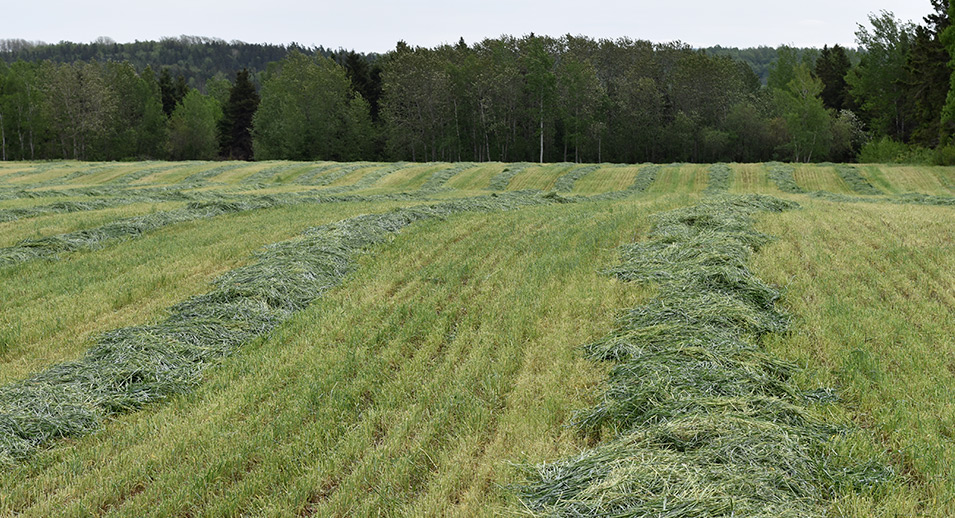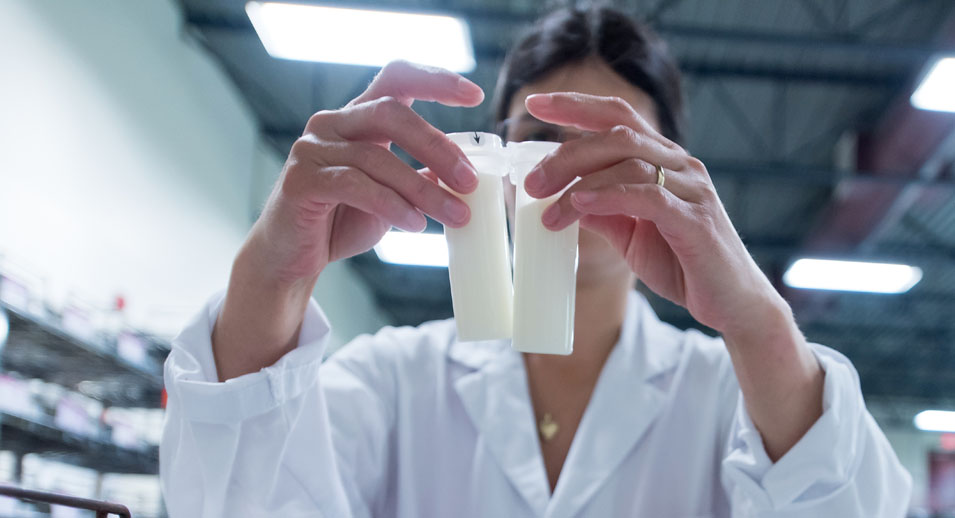Have you considered ensiling your fall rye?*
- August 18, 2021
You’re travelling the roads around the village in the middle of May and you see a neighbour ensiling a crop. You stop at the wayside to take a closer look and you notice that it’s rye. That’s right, rye!

Photo: France Bélanger, M. Sc., agr., MAPAQ Chaudière-Appalaches
Winter cereals, particularly rye and triticale, can indeed be seeded between two crops (silage corn and soybeans, for example) and harvested in early spring. A growing number of producers are adopting this double cropping technique. What are the benefits, and what are the key factors for success?
Numerous advantages
Because of its many advantages, fall rye is really an ideal crop to include in a rotation. When seeded between two crops, this winter cereal provides additional yield very early in the spring, with average yield equivalent to an excellent first cut in southern Quebec, generally between 4 and 5 tonnes of dry matter per hectare. Moreover, because it has an allelopathic effect and grows vigorously in the spring, fall rye is a champion when it comes to suppressing weeds. So much so, in fact, that it is often not even necessary to apply a herbicide once the crop is established. Another benefit of fall rye is its positive effect on soil health. Because it covers the soil during the winter, fall rye reduces erosion and soil nutrient losses, in addition to improving a number of important soil properties (microbial activity, rainfall infiltration, porosity, etc.).
Allelopathy
Where rye is concerned, allelopathy refers to a toxic effect on weeds and other plants due to the release of chemical compounds into the environment.
Keys to success
To take full advantage of the benefits of fall rye, it’s important to know how to manage the crop. The first criterion for a successful harvest is that the crop survive the winter. Fortunately, fall rye is a very hardy cereal – it takes extreme conditions to finish it off. It is in fact the cereal with the best survival rate under Quebec’s harsh winter conditions. To maximize overwintering, it’s important to seed at the right time (between August 20 and October 1, depending on the region) and advoid fields with poor surface drainage.
Another important point to consider is the cutting stage. The nutritive value of fall rye changes very quickly. Quality and palatability decrease drastically as of the early-heading stage. It is thus critical to harvest at the right time and monitor plant growth closely. When harvesting fall rye for silage, aim for the early-boot stage. Pay attention, because a few days are all it takes to miss the mark…
As you’re no doubt aware, spring is not the driest time of the year. Moreover, this crop’s spectacular yield makes it even harder to dry the silage to an acceptable dry matter content.
For efficient drying, follow these guidelines:
- Avoid rainy or excessively cloudy days;
- Cut at a height of 4 in. (10 cm);
- Don’t condition the silage;
- Mow in wide swaths (≥ 80% of mower width);
- Ted 2 hours after mowing.
Now that you know the basics of growing fall rye for silage, the only thing left to do is to try it!
Fall rye for silage, in short
- Primary crops preceding fall rye: canola, soybeans, grasslands, oats, barley, silage corn
- Possible crops to follow: soybeans, grasslands, corn or other warm-season annual grasses (ensure a 10-day wait period between terminating rye and seeding the next crop)
- Seeding: Between August 20 and October 1 (depending on the region)
- Stage for silage harvest: early-boot stage (mid-May)
- Yield: 4-5 t DM/ha
- Quality: 13-18% CP, 50-60% NDF
* The information presented in this article is intended primarily for producers in Quebec and the Atlantic provinces, given their similar climate. Don’t hesitate to contact the author for more information.











